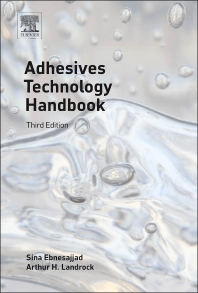ADVANCING ADHESIVES: Assembly Snapshot
An
update on anaerobic thread treatment.

Commonly used as threadlockers, thread sealants and retaining or gasketing materials, anaerobic adhesives can help manufacturers and maintenance personnel decrease total manufacturing or operating costs and enhance equipment reliability. These liquid adhesives cure or solidify when restricted from oxygen in the presence of metal ions. As they contain no volatile solvents that evaporate out of the threads over time, they will not shrink and affect the long-term performance of the sealed joint.
New Technology
Early anaerobic threadlockers were effective at maximum continuous operating temperatures of 300
Thread sealants – These easy-to-apply products block the naturally occurring leak path located where the crest and the root of a pipe thread meet. Once cured, these materials seal and lock threads. During assembly, they act as a lubricant to promote tightening while ensuring consistent assembly torque.
These materials provide instant low-pressure (500 psi) seals, and many formulations will seal to pressures of 10,000 psi after cure. Thread sealants can seal pipe unions and compression fittings, and provide exceptional fluid compatibility and sealing ability.
Retaining compounds – Anaerobic retaining compounds are applied to the inside and outside diameters of parts, and enable rigid cylindrical assemblies to be bonded with adhesives rather than by mechanical means, such as press fits or shrink fits. Once cured, retaining compounds offer high adhesion to metal surfaces through mechanical interlocking and chemical bonding. Retaining compounds are used to assemble clearance, slip and interference fits. They also fill imperfections and augment fits on worn shafts and slip fits.
Formed-in-place anaerobic gaskets and flange sealants – These materials produce leak-proof seals between mating flanges, preventing leakage of moisture, gases, fluids or contaminants. Formed-in-place gaskets and sealants fill the surface roughness between mating metal parts and add structural strength to an assembly. In their uncured state, anaerobic gaskets and flange sealants flow into the microscopic surface irregularities on metal substrates and fill the voids between flange faces. When cured, they unitize the assembly, withstand thermal expansion of the mated parts and resist a range of chemicals. These materials can be applied to any size flange, minimizing cut gasket inventories.

Commonly used as threadlockers, thread sealants and retaining or gasketing materials, anaerobic adhesives can help manufacturers and maintenance personnel decrease total manufacturing or operating costs and enhance equipment reliability. These liquid adhesives cure or solidify when restricted from oxygen in the presence of metal ions. As they contain no volatile solvents that evaporate out of the threads over time, they will not shrink and affect the long-term performance of the sealed joint.
New Technology
Early anaerobic threadlockers were effective at maximum continuous operating temperatures of 300
SIDEBAR: Anaerobic Glossary
Threadlocking adhesives – These adhesives fill the grooves of threads and cure to a hard thermoset plastic that locks threads together, preventing unwanted movement/loosening and leakage/corrosion. They offer high shear strength, very good temperature resistance, rapid cure, easy dispensing and excellent vibration resistance. Threadlocking adhesives are a reliable and inexpensive way to ensure that a threaded assembly will remain locked and leak-proof for its entire service life.Thread sealants – These easy-to-apply products block the naturally occurring leak path located where the crest and the root of a pipe thread meet. Once cured, these materials seal and lock threads. During assembly, they act as a lubricant to promote tightening while ensuring consistent assembly torque.
These materials provide instant low-pressure (500 psi) seals, and many formulations will seal to pressures of 10,000 psi after cure. Thread sealants can seal pipe unions and compression fittings, and provide exceptional fluid compatibility and sealing ability.
Retaining compounds – Anaerobic retaining compounds are applied to the inside and outside diameters of parts, and enable rigid cylindrical assemblies to be bonded with adhesives rather than by mechanical means, such as press fits or shrink fits. Once cured, retaining compounds offer high adhesion to metal surfaces through mechanical interlocking and chemical bonding. Retaining compounds are used to assemble clearance, slip and interference fits. They also fill imperfections and augment fits on worn shafts and slip fits.
Formed-in-place anaerobic gaskets and flange sealants – These materials produce leak-proof seals between mating flanges, preventing leakage of moisture, gases, fluids or contaminants. Formed-in-place gaskets and sealants fill the surface roughness between mating metal parts and add structural strength to an assembly. In their uncured state, anaerobic gaskets and flange sealants flow into the microscopic surface irregularities on metal substrates and fill the voids between flange faces. When cured, they unitize the assembly, withstand thermal expansion of the mated parts and resist a range of chemicals. These materials can be applied to any size flange, minimizing cut gasket inventories.
Links
Looking for a reprint of this article?
From high-res PDFs to custom plaques, order your copy today!




